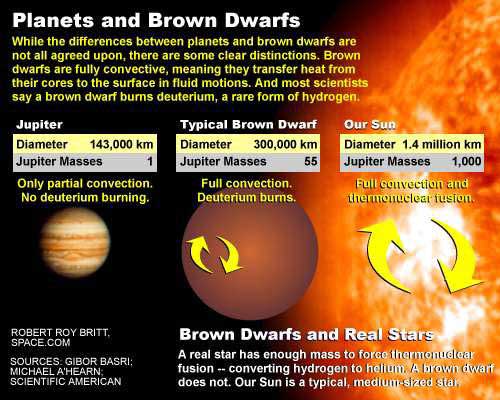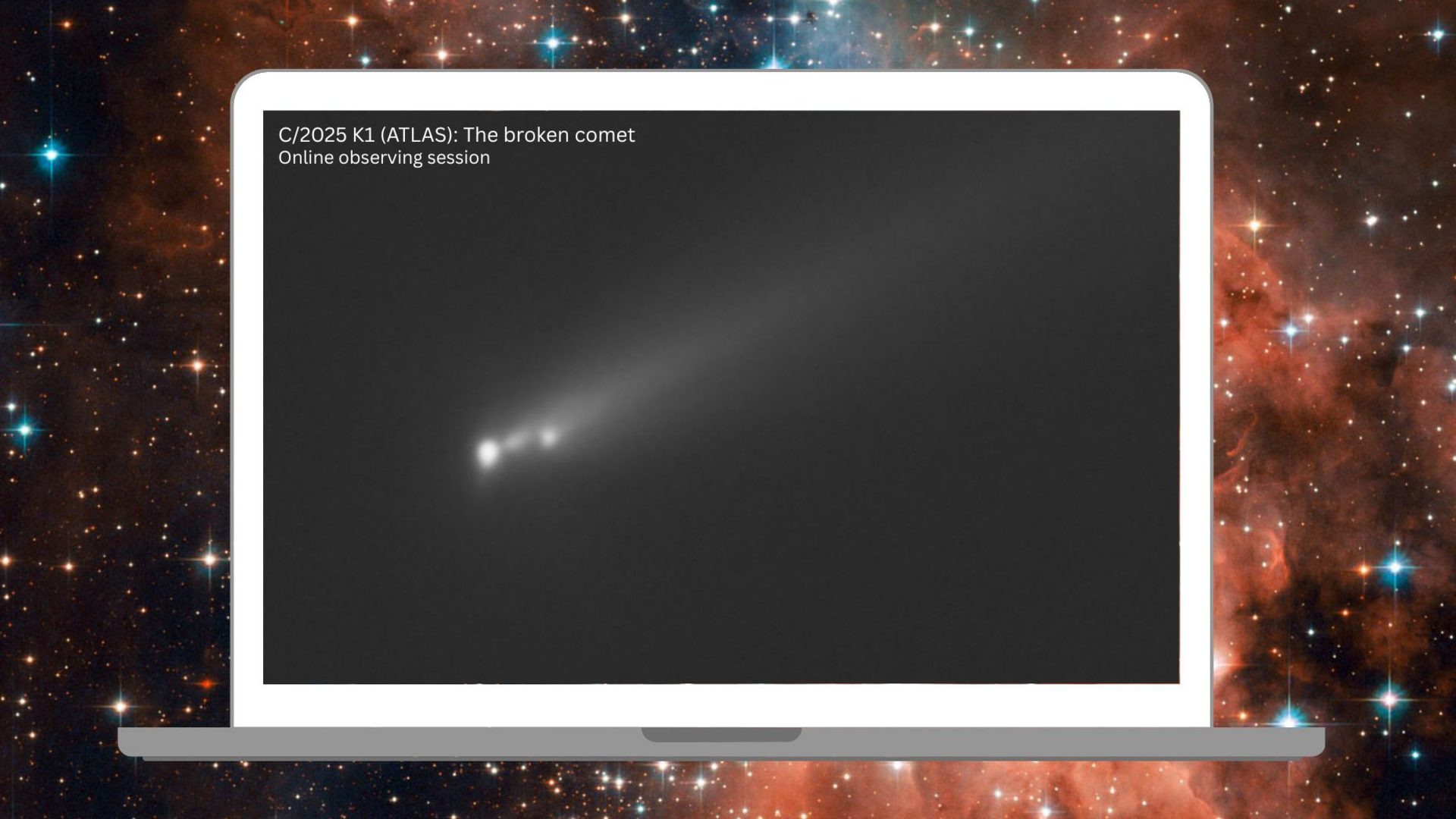Astronomers Claim Potential Mini Solar System

For several years, astronomers have struggled to distinguish between planets, stars, and in-between objects known as brown dwarfs.
Brown dwarfs are generally thought to be more massive than planets, but not hefty enough to ignite the thermonuclear fusion that powers a normal star.
So things get really confusing when a brown dwarf has an object orbiting it. Is that a planet?
Things get even more confusing when, as now, astronomers discover a modest brown dwarf -- one with a mass that could be considered planet-like -- that looks as if its about to spawn planet-like objects.
A team led by Kevin Luhman of Penn State University announced Tuesday the discovery of a brown dwarf just eight times the mass of Jupiter. It's considered a brown dwarf in part because it formed alone in space, not orbiting anything else. And it is encircled by a disk of material that looks very much like planet-forming regions seen around real stars.
Nobody knows if the gas and dust in the disk will coalesce into planets. But Luhman speculates that the newfound setup could evolve into a miniature solar system.
"Here we have a Sun that is so small it is the size of a planet," he said. "The question then becomes, what do we call any little bodies that might be born from this disk: planets or moons?"
Breaking space news, the latest updates on rocket launches, skywatching events and more!
"Some go by size, and others go by how the object formed," says study team member Giovanni Fazio of the Harvard-Smithsonian Center for Astrophysics. "For instance, this new object would be called a planet based on its size, but a brown dwarf based on how it formed."
Luhman and colleagues studied the brown dwarf, called Cha 110913-773444, with NASA's Spitzer Space Telescope, the Hubble Space Telescope, and two telescopes in the Chilean Andes, the Blanco telescope of the Cerro Tololo Inter-American Observatory and the Gemini South telescope.
The object is 500 light-years away in the constellation Chameleon. It is about 2 million years old. Our Sun is about 4.6 billion years old.
The results will be detailed in the Dec. 10 issue of Astrophysical Journal Letters.
- New Neighbor May Be Closest Known Brown Dwarf
- Fresh Debate over First Photo of Extrasolar Planet
- Free-Floating Planets -- British Team Restakes Dubious Claim

Rob has been producing internet content since the mid-1990s. He was a writer, editor and Director of Site Operations at Space.com starting in 1999. He served as Managing Editor of LiveScience since its launch in 2004. He then oversaw news operations for the Space.com's then-parent company TechMediaNetwork's growing suite of technology, science and business news sites. Prior to joining the company, Rob was an editor at The Star-Ledger in New Jersey. He has a journalism degree from Humboldt State University in California, is an author and also writes for Medium.
